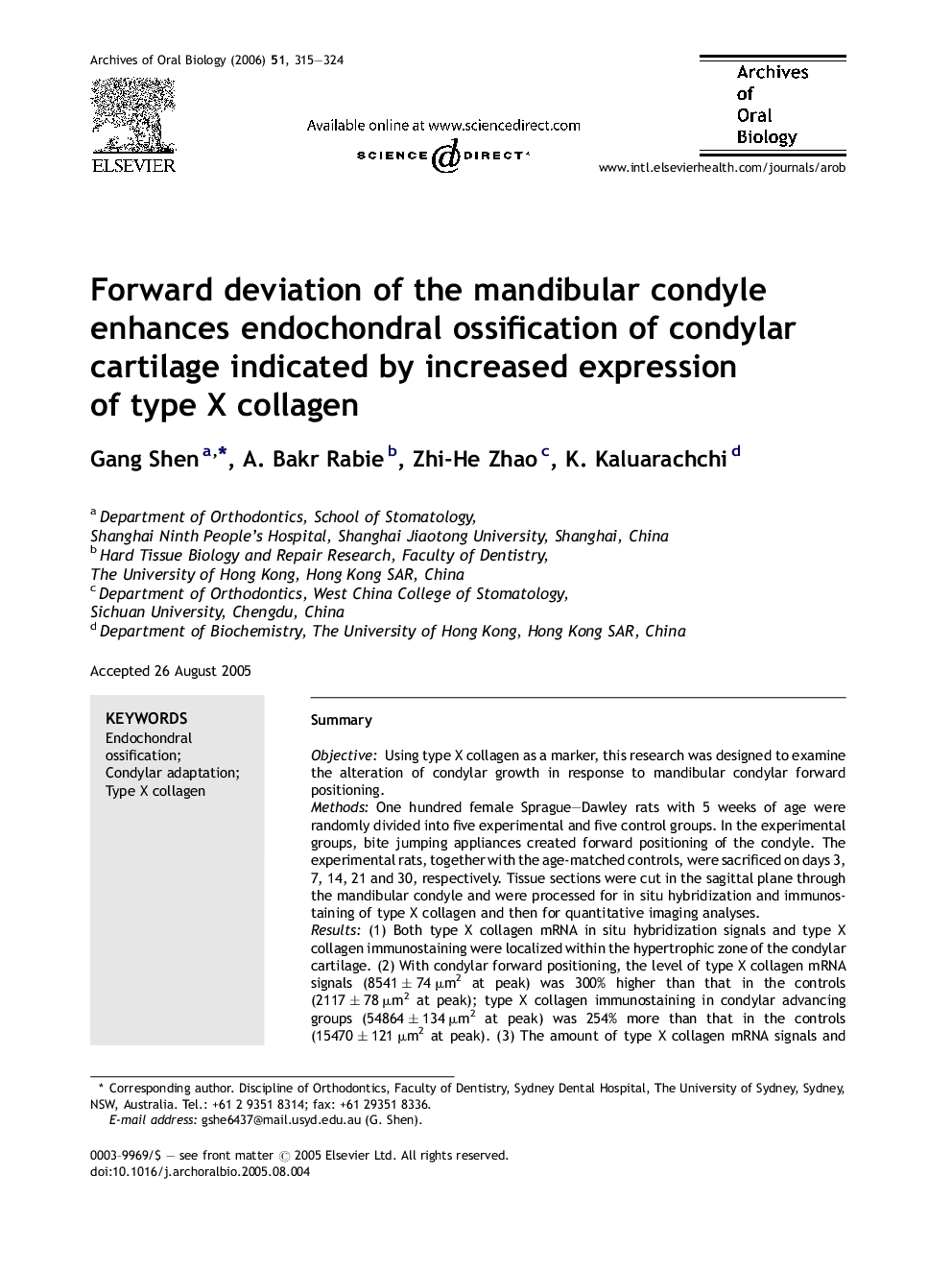| Article ID | Journal | Published Year | Pages | File Type |
|---|---|---|---|---|
| 3121907 | Archives of Oral Biology | 2006 | 10 Pages |
SummaryObjectiveUsing type X collagen as a marker, this research was designed to examine the alteration of condylar growth in response to mandibular condylar forward positioning.MethodsOne hundred female Sprague–Dawley rats with 5 weeks of age were randomly divided into five experimental and five control groups. In the experimental groups, bite jumping appliances created forward positioning of the condyle. The experimental rats, together with the age-matched controls, were sacrificed on days 3, 7, 14, 21 and 30, respectively. Tissue sections were cut in the sagittal plane through the mandibular condyle and were processed for in situ hybridization and immunostaining of type X collagen and then for quantitative imaging analyses.Results(1) Both type X collagen mRNA in situ hybridization signals and type X collagen immunostaining were localized within the hypertrophic zone of the condylar cartilage. (2) With condylar forward positioning, the level of type X collagen mRNA signals (8541 ± 74 μm2 at peak) was 300% higher than that in the controls (2117 ± 78 μm2 at peak); type X collagen immunostaining in condylar advancing groups (54864 ± 134 μm2 at peak) was 254% more than that in the controls (15470 ± 121 μm2 at peak). (3) The amount of type X collagen mRNA signals and immunostaining in experimental and control groups reached the highest levels at day 14 and day 21, respectively, indicating that an increase in endochondral ossification occurred 21 days after condylar forward deviation.ConclusionCondylar forward repositioning provokes an enhanced maturation of condylar chondrocytes resulting in increased synthesis of type X collagen, a extracellular protein that attributes to endochondral ossification.
